Random Tangling
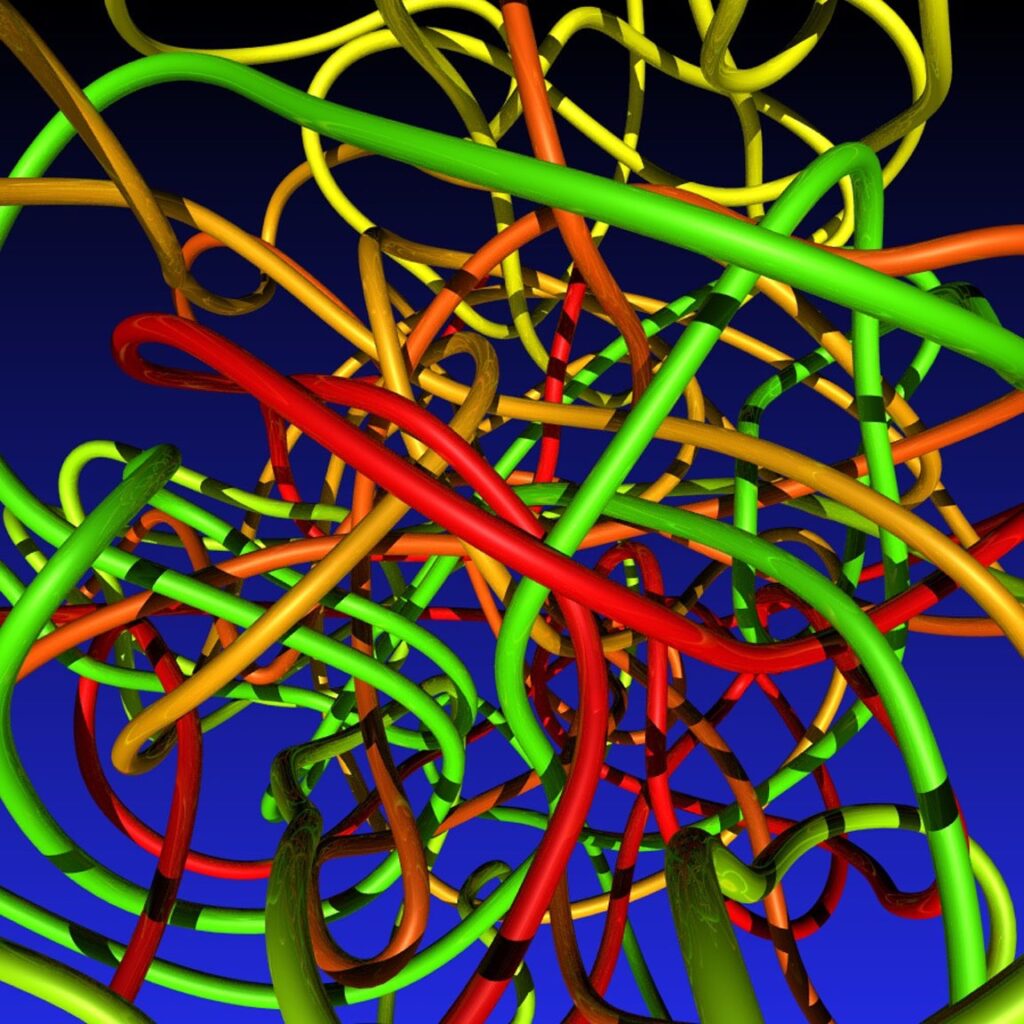
It is one of the fundamental facts of the universe that long strings tend to become entangled. Put an extension cord in a drawer, holiday lights in a box, DNA in a cell, shoelaces in a washing machine, long hair on a pillow, and you get a tangle. What kind of tangle? Well, that depends on a lot of factors, many of which are either not well understood or not understood at all. What we can do is make models of these processes, and study the models.
Several of the most common models consist of some sort of random flight in space. Basically, the idea is that we follow the path of a drunken fly through space, thinking of its trajectory as our string. A key feature of this sort of construction is that we keep adding more length to the string as the process continues. Biopolymers like DNA build like this, adding base pairs to the open end of the string.
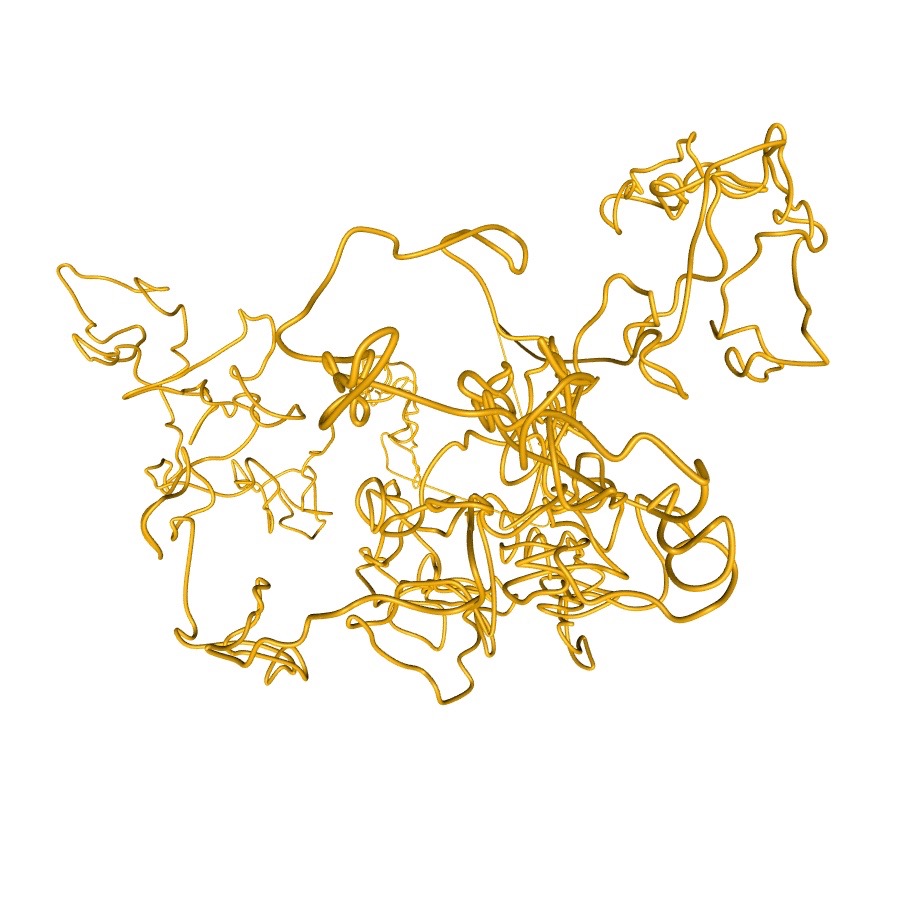

So we take a mathematical random flight. One way to do this is to start at the origin in the cubic lattice, and randomly choose a direction for the first step. There are six choices (positive and negative in x, y, or z). Let’s say the random choice was z, so we add a unit stick running from (0,0,0) to (0,0,1). Now we can move in one of five directions — we can’t immediately go down (-z), because we just put a stick there. If our random choice came up as the down direction, we simply choose again.
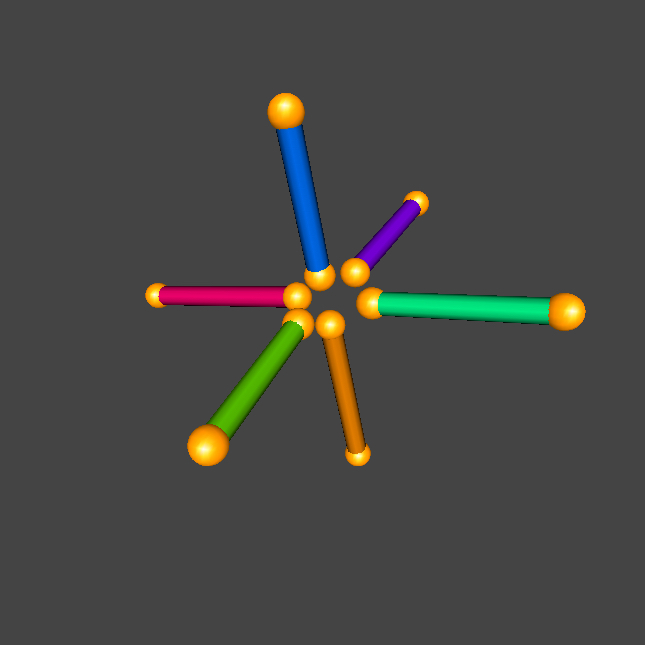
We continue in this manner, adding sticks to our chain, with the rule that whenever our random choice is a vertex that is already occupied, we ignore that choice and choose again. We can give the choices an easy code: N, S, E, W, U, D, standing for North, South, East, West, Up, and Down, and we could put the letters on the six sides of a die and roll…
So, for example, the code for the two images at right are UNUE and UNUEEUS.
So we can think of the random flight as a random sequence of these letters, with the caveat that not all sequences are allowed, since we don’t allow the chain to intersect itself.
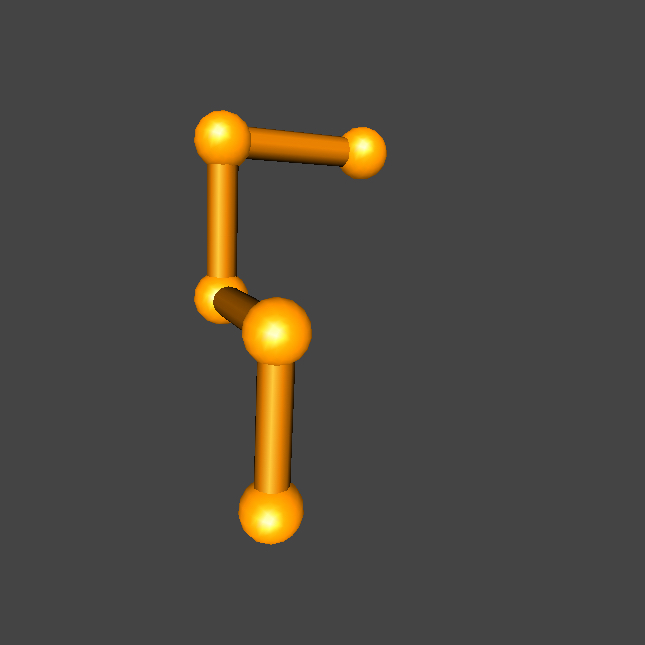

Now we know that the best way to analyze topology is to work with closed loops, so we will limit ourselves to flights that close up. That is, if the the two ends come to a place where they are one stick apart, we join the ends, and stop the flight. This may not be a high percentage of all possible flights, but some percentage will close.
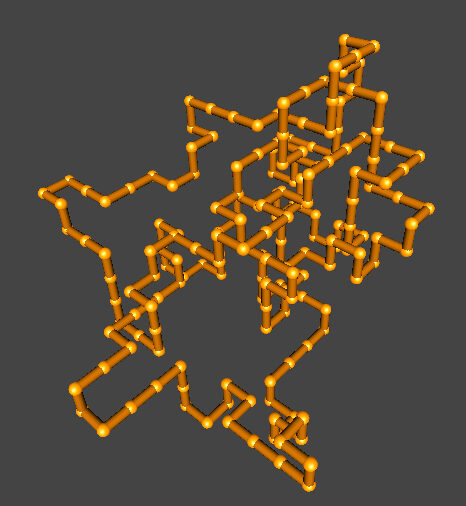
In the picture to the right we have what we can call a tight open trefoil on the cubic lattice. We have constructed it using the minimal stick trefoil (on the cubic lattice) from the previous chapter by opening the knot at one vertex. Assume the knot is fixed, in the sense that we can add sticks to the open ends, but cannot move the sticks that are already placed. Let’s say this pattern appears in a long chain on the cubic lattice. Does that mean the chain has a knot in it? The chain has open ends, so is there something that can happen as we add to the chain that would remove this knot? Knots do not have inverses, so there is no way to tie another knot later in the stick chain that would undo this one. The other possibility is that an open end would later return and pass through the knot to undo it topologically. Knots like this are sometimes called slipknots. We use a slipknot construction to tie our shoes, so we can untie them easily. However, if you tie a knot and pull it tight before you bring the end back through, you can’t make a slipknot, because there is no space for the end to return through.

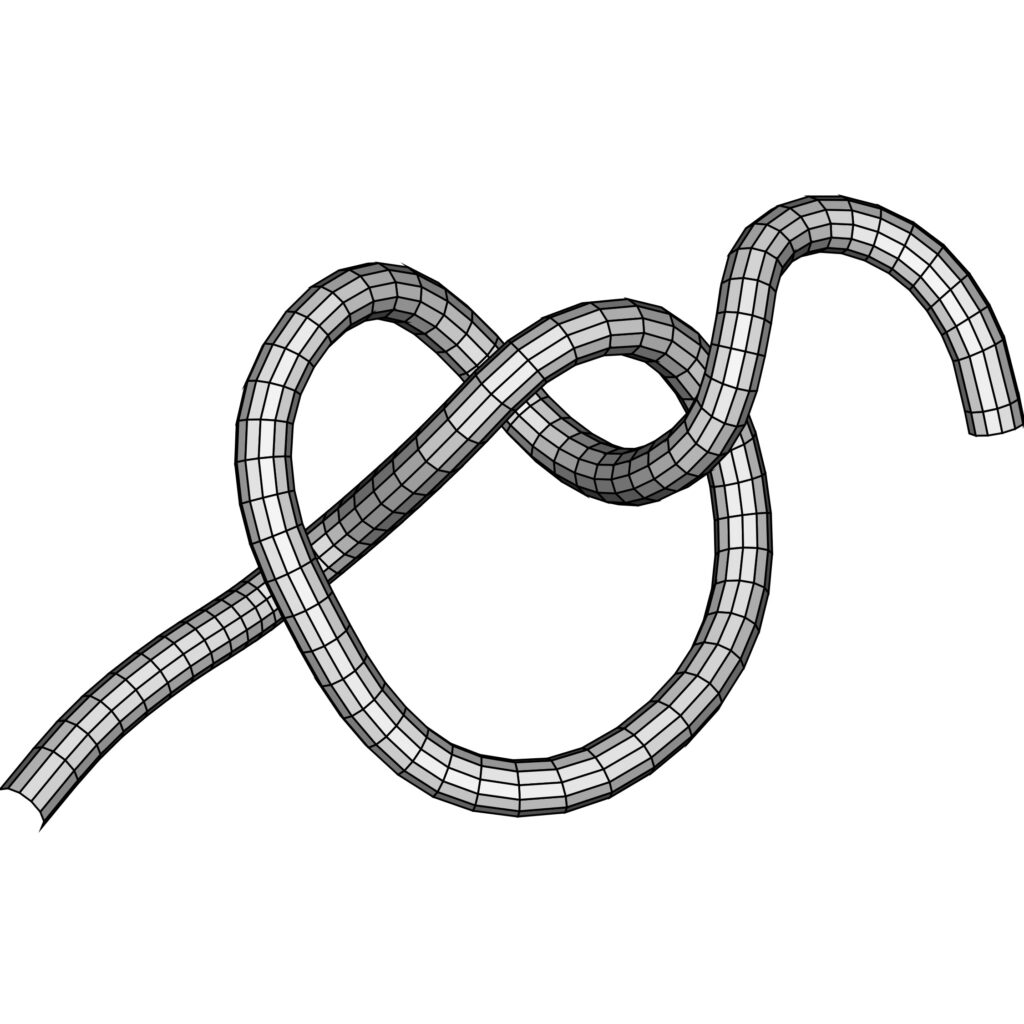


This is what happens with a tight knot pattern on the cubic lattice. If our random flight ever follows a tight knot pattern, there is no room for the flight to return back through the knot, so that knot has to remain a factor in the long chain.
Next we consider the Kesten Pattern Theorem, which says that in a random sequence of symbols, any pattern that can appear will appear. In fact it will appear at some constant frequency. This is easy to believe in a simple example. Say you are flipping a coin creating a sequence of H’s and T’s, standing of course for heads and tails. Then the sequence HTH will appear with some frequency.
Similarly, in our flights, which can be given by random sequences of N, S, E, W, U, D, any given finite sequence will eventually appear with some frequency. In particular, the sequence WWWSSSDEENNWUUWSWDDEEUEE, which is the tight open trefoil above, will appear in any loop that is long enough. There are other sequences that give tight trefoils (for instance change W to E, N to S, U to D, and vice versa, to build the trefoil in the opposite direction), as well as sequences that give tight figure eights, tight star knots, and so on, all of which will eventually appear.
Taken all together, these observations give us a proof that these loops on the cubic lattice, if long enough, are on average knotted. In a sense this is a proof of the our experience that long strings get tangled.
In the real world, as opposed to on the computer, there are many methods of generating random strings in three dimensions. You could throw some string in the washing machine or dryer. You could put some light chains in a box and shake the box — or put it in the trunk of your car and drive around on bumpy roads.
On the computer there are also many possible random tangling models. There are gaussian random flights in three dimensions, and similarly gaussian random polygons, which are closely related to the flights on the cubic lattice we have discussed. For the gaussian flights, we begin at the origin and chosen a random direction. The difference is that now the direction can be any in three dimensions. One way to do this is to use spherical coordinates, so we choose two angles at random. This gives a direction. Now for the length we have a choice. We could make all steps the same length, or we could vary them in some random way, say by choosing a random length between 0 and 1.

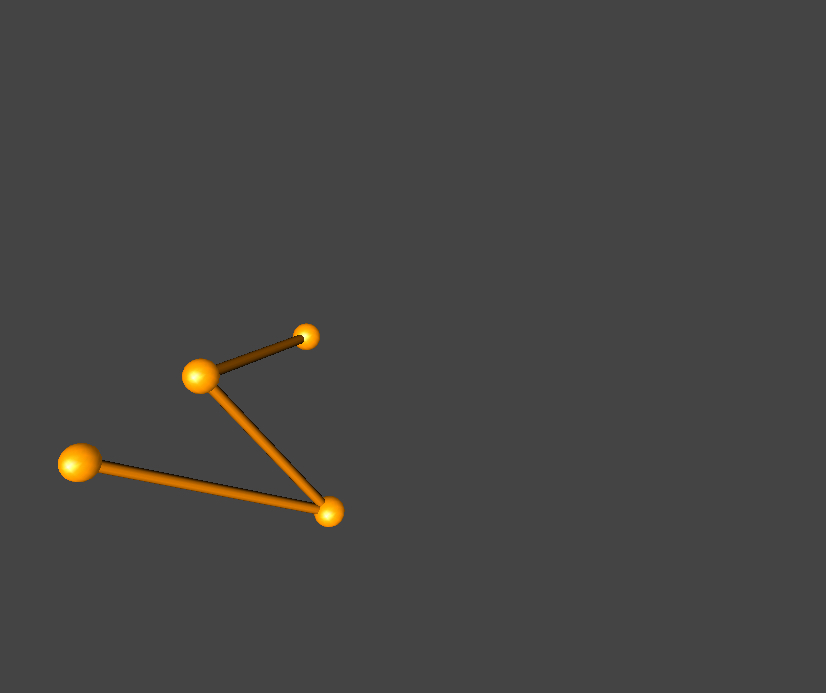
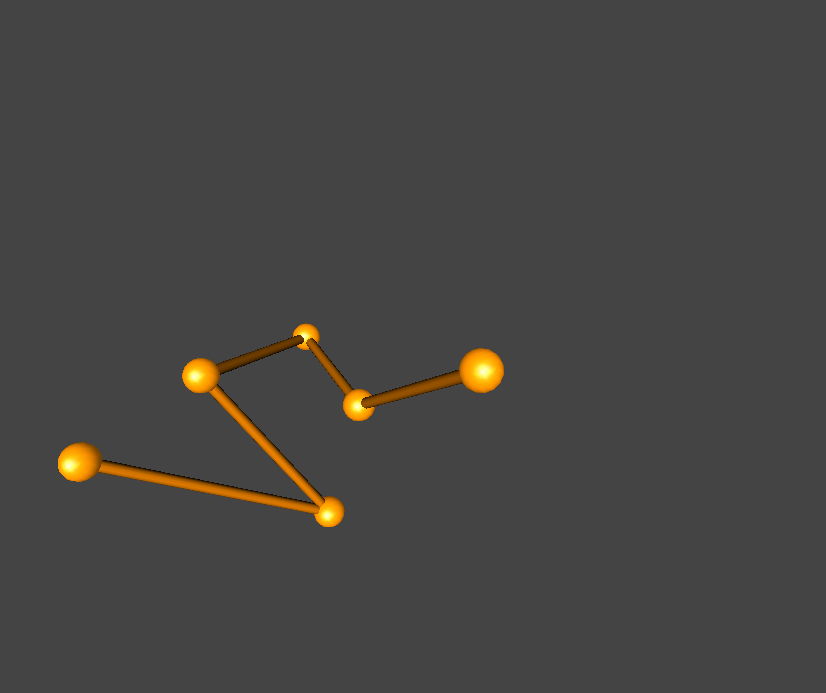
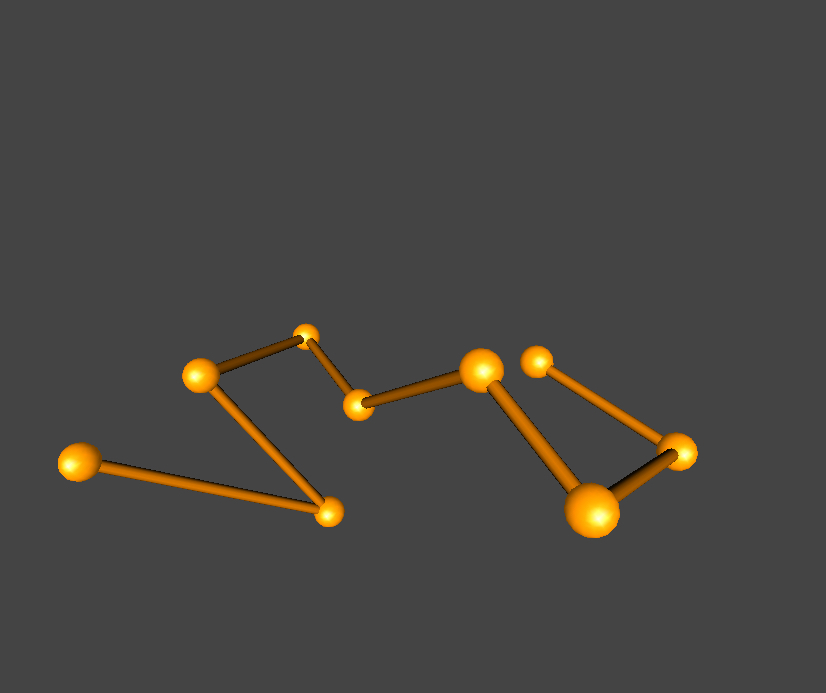
For gaussian random flights, we have many of the same results we had with flights on the cubic lattice. We can consider closed flights, by closing the flight whenever the two ends get within a predetermined distance. In this case it can be proved that if a knot is tied tightly enough, then it is unlikely that the end will ever return in such a way to untie it. We can’t prove that it is impossible, as we can with tight knots on the cubic lattice, but it can be shown that it is unlikely enough that the probability of knotting in a long loop tends to 1.
One method that deals with the closed loop problem in a novel way is to begin with a long closed loop in a simple position, like a regular polygon in the plane with many sides. We can then pick two vertices at random, join them with an imaginary line. The polygon is now divided in two pieces, which meet at the two vertices. Now rotate one of those pieces through a random angle with the imaginary line as the axis of rotation. Next pick two other vertices at random and repeat, and so on. Note that we must allow the chain to pass through itself as we do this. If we rejected moves that required the passing through, we would always have the unknot we started with. These moves are called crankshaft rotations.
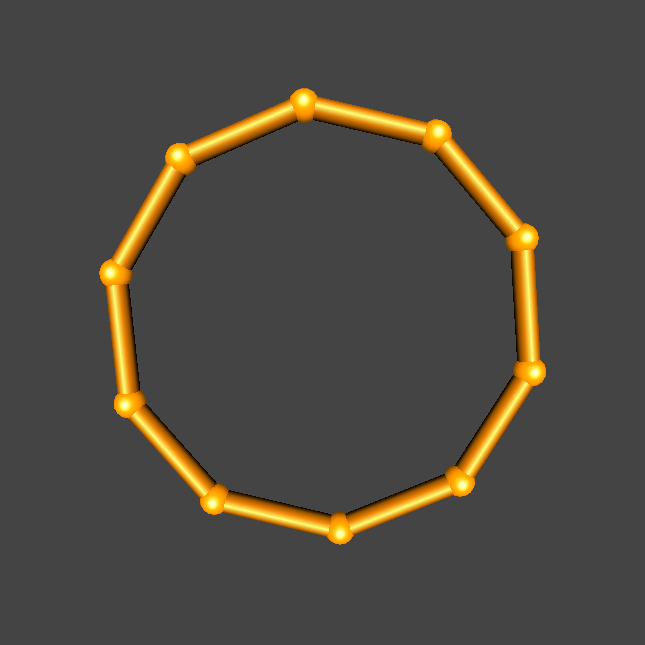
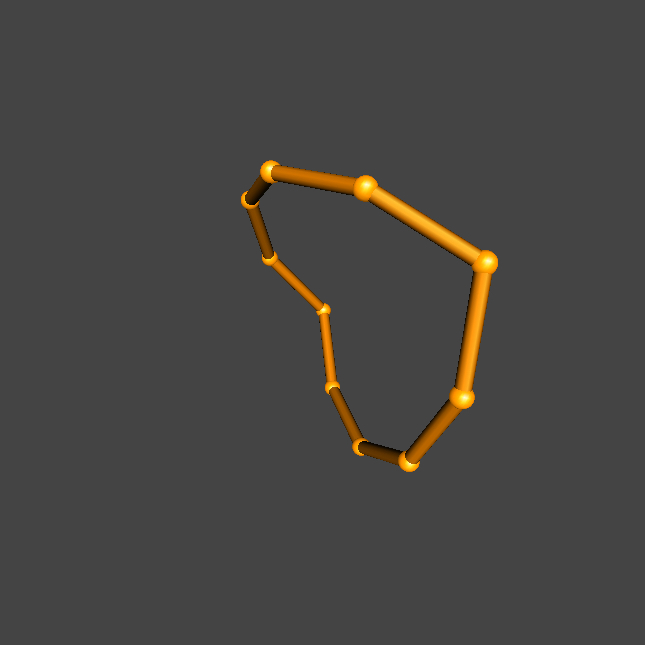
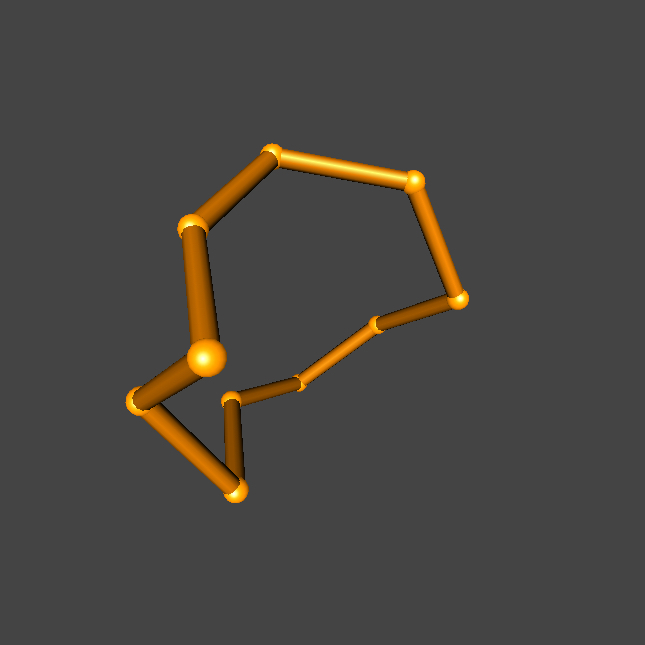
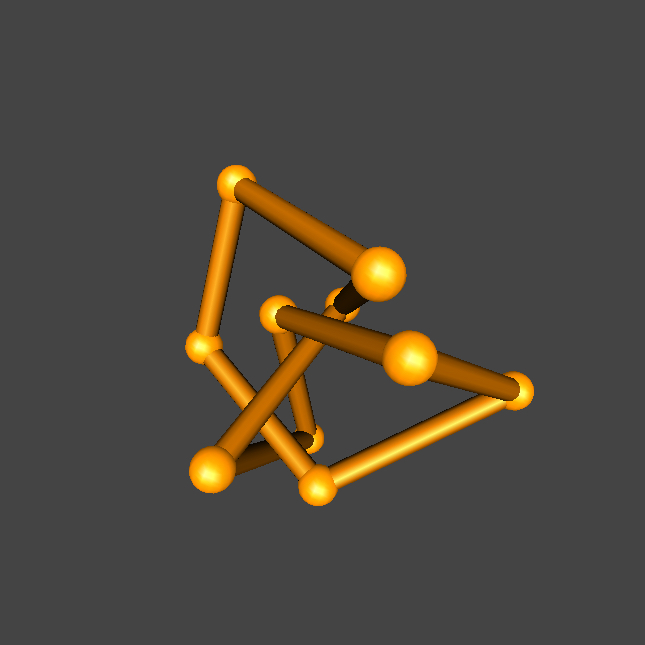
Yet another method without a closing the loop problem are techniques we might call finite volume methods (FVM’s). Here N random points are chosen, say either in the interior of a sphere, or on the surface of the sphere, and connected cyclically. That is, choose N points. Now connect point 1 to point 2, point 2 to point 3, and so on. At the end we connect point N to point 1. A strength of this method is that this last stick is no different from the rest — it is a connection between random points in the volume. In fact we could order the points differently and get a different random loop. There are N choices for the first point, N-1 for the second, and so on, so from N points we can make N! different closed loops. This method can make complex knots with relatively few edges. This method can be modified to require that the sticks have some thickness. That is, we only allow choices of points which can be connected cyclically with sticks of some constant radius, such that the sticks do not intersect one another except at the endpoints. If the sticks are infinitely thin, this is always possible. But if the sticks have some thickness, as N gets larger it becomes harder and harder to find such a set of points because the sticks fill the volume.
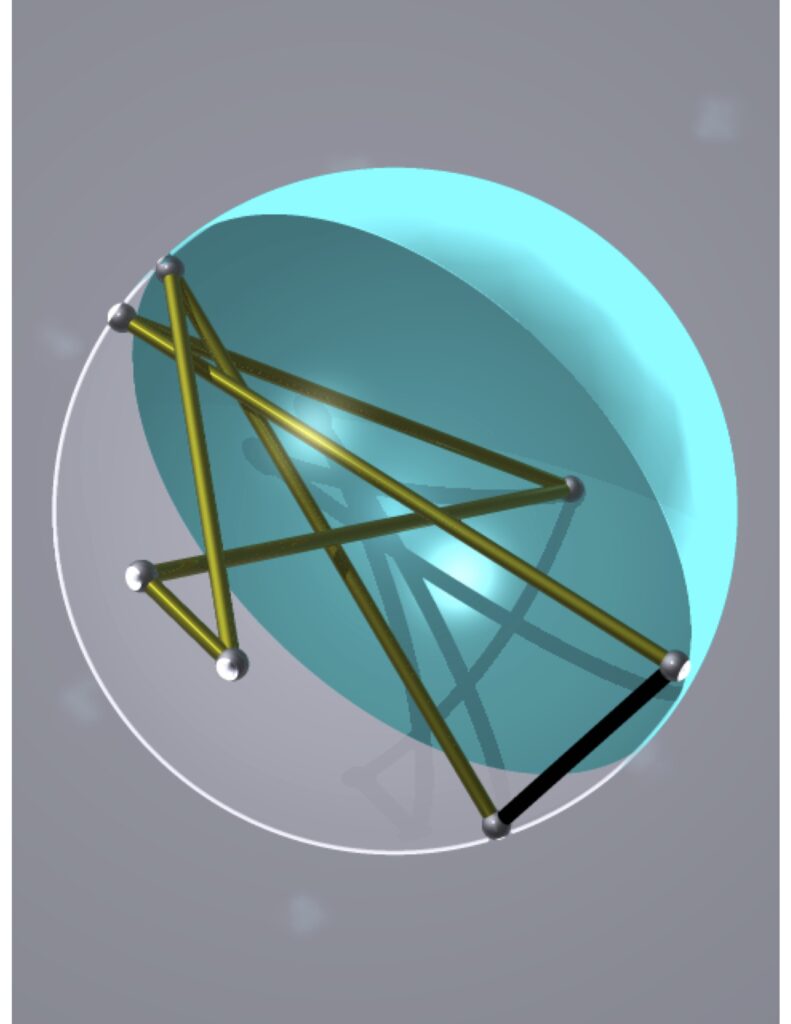
Some people have studied random choices in the set of hamiltonian cycles on the cubic lattice, which are closed flights on a cube of a given radius which visit each vertex in that cube exactly once. This might be a model for a tightly packed rope or string, also called a coil at the molecular level.

How might we model random linking? As a first attempt, consider sets of circles distributed somehow in a proscribed volume. For example, let the volume be the unit sphere. Now choose a radius for the circles. Then choose random points in the sphere to be the centers of the circles. Finally, choose two random angles for each circle to determine how the circle is oriented in space.
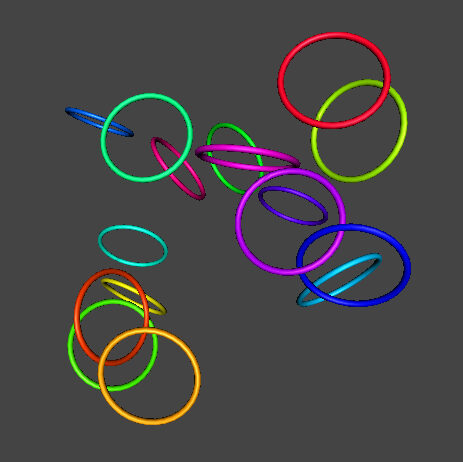
You can imagine that the radius of the circles could make a good deal of difference. Say we have 20 circles of very small radius, perhaps .001, randomly distributed in the unit sphere. Then it would be very unlikely that any pair would be linked. On the other hand, if the 20 circles each have radius 1, and their centers are no more than distance 2 apart because the centers are in the unit sphere, then there is likely to be some linking.
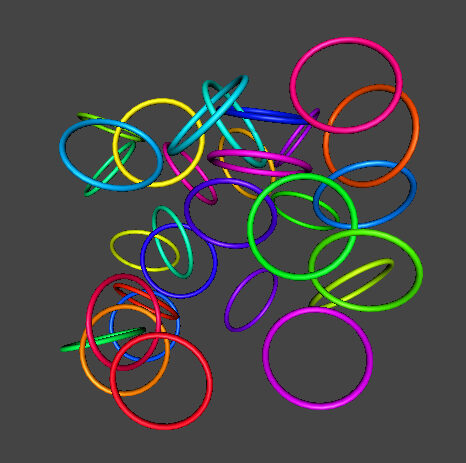
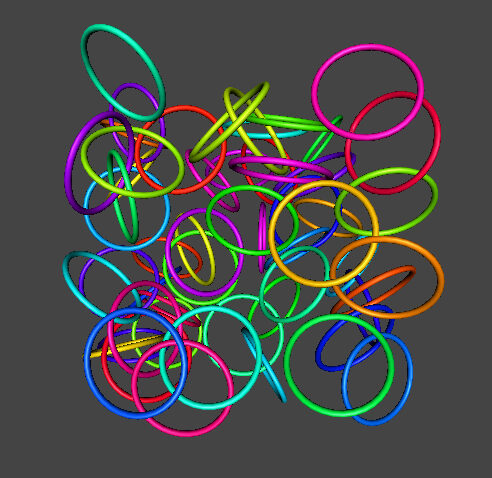
There is a neat result with this model. It says that as N, the number of circles, tends to infinity, then they become a sort of linked clump. That is, between any pair of circles you can find a chain of linked circles connecting them. We can have an experience something like this when we pick up a paper clip from a bowl full of clips, and find we get many when we intended to get one. Except the result says that when N gets large enough, when we pick up one circle we get all of them.
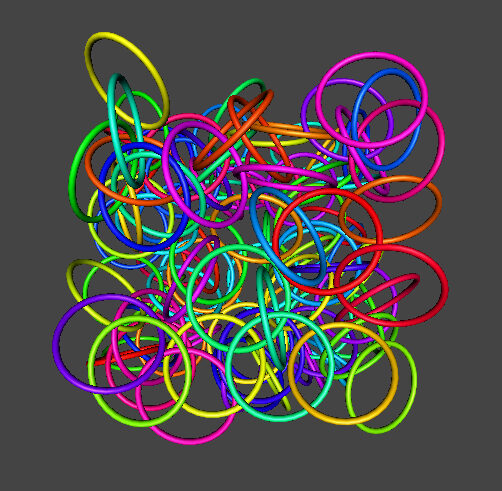
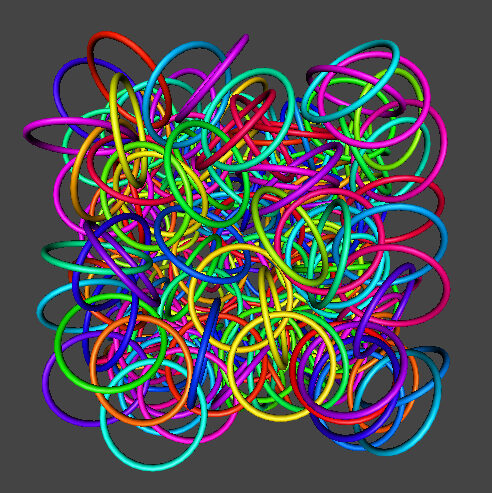
Here is a basic question to ask about the various random knotting and linking models. Does the topological complexity tend to come from the sum of many small factors, or does the thing tend to end up in one big interconnected topological mess? We saw in the linking model that as the number N of circles grew, we tended toward a single large interlinked component. Now consider one of the single filament models such as a flight on the cubic lattice. As the string gets long, do we tend to get a product of many factors, or do we tend to get one large prime knot, or something in-between, like lots of simple factors and a few large tangles? We have some names for the two ends of the spectrum. If the random process gives lots of relatively simple factors, we’ll call it factorian. If you tend to get one big clump, we’ll call it gordian, after the gordian knot that could not be untied.
In the single filament models, it is plausible that which sort of topology you get depends on how frequently the string returns to the same neighborhood. In the finite volume model we kept crisscrossing the sphere, passing back through the tangle we have already created. So this seems like it will be gordian. In the random flight on the cubic lattice, we find new territory as we continue — there is no boundary — and there are factors we create that we can prove we cannot pass through again (the tight patterns), so this would seem to be factorian.
A simple question for both the random flight and the finite volume methods is: what is the probability of a single loop being a trefoil? We know if there are few sticks, say 4, the unknot is the only possibility. For 6 sticks and more, a trefoil is possible in the finite volume method, and for 24 and above it is possible on the cubic lattice. But what happens as the loop gets longer? In the finite volume method, once a trefoil is formed, the additional sticks are likely to pass through the trefoil, making it into a more complex knot. In the random flights, gaussian or on the cubic lattice, additions to the chain on average move the end away from the original trefoil, and enough additional length is likely to form another knot, so we no longer have a trefoil loop, but instead a knot product. So in both cases, if we graph the probability of getting exactly a single trefoil as a function of the length of the loop, it starts at 0 for length 0, begins to rise at some relatively small number, rises to a peak and then falls back toward 0 as the length gets long, because there is likely more knotting than a single trefoil. We would expect a similar curve for a figure eight or any other knot.
Now all of these models are typically done on the computer, and there is a deep and interesting question as to how we might get a computer to choose truly random numbers. The basic problem is obvious, in a way. We tend to drive computers with algorithms, in other words a set of predictable steps. How do you give a set of predictable steps to a random outcome?